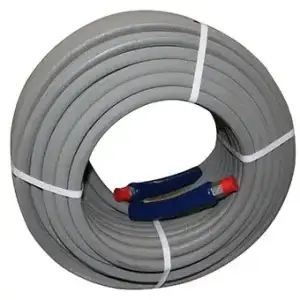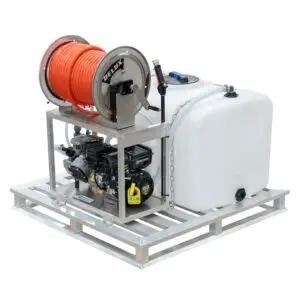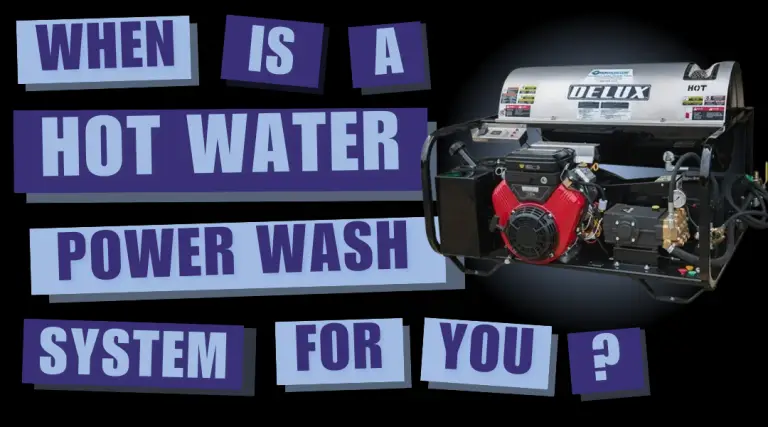- Home
- /
- PowerWash Industry
- /
- Time-Saver Pressure Washing Checklist
Subscribe To Our Newsletter
Stay in the know on the latest products, deals, events, tips & tricks.
Social Media
Popular Products
-
-
-
-
All Pressure Washers
100 Gallon Tank Soft Wash Skid – Vanguard Engine, 11 gpm Pump, Aluminum Skid – Stallion Small Truck Batch
$6,629.97
Time-Saver Pressure Washing Checklist
STRICTLY BUSINESS
A Time-Saver Pressure Washing Checklist for Every Job
James Curry, CECS
G&K Service Company
How many of us have unlocked our office doors, ready to start the day and the phone rings. The customer says, “your service men were here last night and our fans aren’t working.”
You ask your customer, “Have you turned the switch on yet?” “Yes,” the customer replies. Then you ask the customer, “Have you checked the breaker box?” “No!” the customer replies. Then the customer goes on to say that he or she does not know anything about the breaker box. You ask the customer, “Is there anyone in the restaurant that is familiar with the building?” “No,” the customer replies. “I am the only one here.” Now you have no choice but to tell the customer you will send a service person out to the restaurant. The customer’s final question: “How soon will the serviceman get here? I have to start cooking right away!”
As you hang up the phone, you are wondering who you will send and is it something simple or will I need an electrician. Before the problem is resolved, you have spent the morning dealing with it and haven’t created any revenues.
The only answer for the commercial kitchen exhaust cleaning company is to prevent the problem from happening in the first place.
Here is a simple check list for the personnel to help them take care of the customer’s fan(s) and be sure they are in working condition.
-
- Always test the fans before beginning any work.
-
- Locate the breakers for the fans and turn them off. This may also be the only place you can tag and lockout.
-
- Never tip a fan completely upside down. Liquids will run inside the motor housing. Use a bucket or other support to hold the fan at a 45 degree angle.
-
- Be extremely careful washing the topside of a drum fan between the fan and motor housing bottom plate. Direct drive fans have a motor air cooling holes located here.
-
- When pressure washing, the risk is even greater that water will infiltrate the motor housing.
-
- If you have an inexperienced crew, require that they wrap the motor and switches with plastic.
-
- If the fan has some type of roof protection assembly, be sure to protect it with plastic. Care should also be taken to prevent any damage to the entire roof protection assembly.
-
- Be sure to safeguard all screws, nuts, bolts, washers, etc. When finished, replace all parts and hardware.
-
- Remove tag and lock. (Lockout/ tagout)
-
- Turn fan on before leaving the restaurant to make sure it is operating properly.
-
- If the fan does not operate properly, make the necessary adjustments.
-
- If the fan cannot be made to run, be sure the office is made aware of the problem.
I am sure that everyone in the membership has experienced problems with fans. The laundry list suggested is by no means complete and I’m sure many of you could add more safeguards.
The customer never seems to forget when the fan doesn’t work. I have found, however, that by training your service personnel in the use of a fan check list these complaints will be significantly reduced.
This article appeared in the First Quarter 1998 edition of “The Scratch Pad”
Share This Post
More To Explore
Tax Benefits For Power Washing Professionals
Navigating the complexities of tax planning can be a daunting task for power washing professionals, yet it’s a crucial aspect …
Top 5 Must-Have Attachments to Elevate Your Power Washing Efficiency and Precision
Attachments for power washing systems are essential tools that significantly enhance the effectiveness, speed, and precision of professional cleaning jobs. …
When Should You Get A Hot Water Power Wash Machine?
When a Hot Water Power Washing System is Your Best Choice When deciding between a hot water power washing machine …
The Science Behing Power Washing
The Science Behind Effective Power Washing The science behind power washing is a balance of pressure, water, and chemical solutions …













